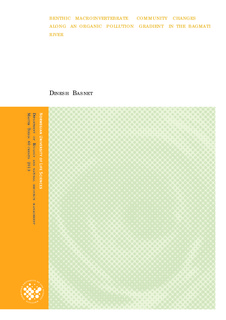Benthic macroinvertebrate community changes along an organic pollution gradient in the Bagmati River
Master thesis

View/
Date
2013-09-06Metadata
Show full item recordCollections
- Master's theses (INA) [593]
Abstract
The composition of macroinvertebrate assemblages at 6 different stations of the Bagmati
River was studied by field sampling in February 2012. A total of 2583 benthic
macroinvertebrates representing 10 orders and 29 families were recorded in the river. Diptera
formed the major part of the benthic invertebrates with 45.1% followed by Ephemeroptera,
24.5%, Oligochaeta 15.9% and Trichoptera 5.6%. The abundance of the macroinvertebrates
varied significantly between the stations. The EPT index and EPT to Chironomidae ratio
showed that highly sensitive taxa were abundant in the upstream sites of the river whereas the
pollution tolerant taxa were abundant at the downstream sites.
The biotic indices (BMWP, ASPT, FBI, CLI, and EPT) revealed that the ecological condition
of the river was good at the upstream sites and very poor in the downstream direction. The
relationship between biotic indices and dominat taxa of the sampling stations of the Bagmati
River with the physico-chemical parameters was highly significant. This study shows that
distribution of benthic macroinvertebrates in river reaches with differing pollution can
function as biological indicators in the bioassessment of the river and can also be used in the
evaluation of the water quality in other freshwater localities in Nepal.